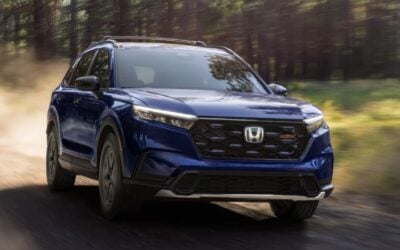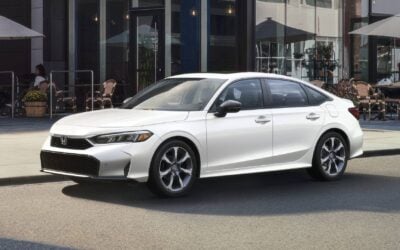
Self-driving technology has been heralded as a game-changing innovation that will transform our daily lives. However, the reality of this technology is far from certain. While autonomous vehicles offer potential benefits such as improved safety, reduced traffic congestion, and increased efficiency, there are still many challenges that must be addressed before this technology can be fully realized. The top 5 self-driving car companies are closer than ever before to overcoming the hurdles of self-driving. Let’s take a look at who the key players are, their unique approaches to remaining challenges, and the frontier of innovation today.
The 5 Leading Self-Driving Car Companies
Tesla

Tesla is known for its electric cars, but the company has also been working on autonomous driving technology for several years. Tesla’s Autopilot system allows cars to handle some driving tasks on their own, but the company’s ultimate goal is to create fully autonomous vehicles.
The Tesla approach to self-driving has been controversial due to allegations of overpromising and under delivering. Still, the company has made significant progress in this area in recent years. Here are some of the key innovations that Tesla has introduced in the field of self-driving technology:
Autopilot: Tesla’s Autopilot system is one of the most advanced self-driving systems on the market today. The system uses a combination of cameras, radar, and ultrasonic sensors to detect and respond to obstacles on the road. It can handle many driving tasks, such as steering, accelerating, and braking, and it can even change lanes and park the car in certain situations.
Full Self-Driving (FSD): Tesla’s FSD system is designed to be even more advanced than Autopilot. While Autopilot is designed to handle many driving tasks, it still requires human supervision. FSD, on the other hand, is intended to allow the car to drive itself completely without any human input.
Neural Networks: Tesla’s self-driving technology is powered by neural networks, which are a type of machine learning algorithm. These neural networks are trained on massive amounts of data from Tesla’s fleet of vehicles, which allows them to recognize and respond to a wide range of driving scenarios.
Vision-Only Approach: Tesla’s self-driving technology is unique in that it relies primarily on cameras for sensing the environment, rather than lidar sensors which are commonly used by other companies. Tesla’s approach is based on the idea that cameras are a more cost-effective and scalable solution than lidar, and the company has made significant progress in developing advanced computer vision algorithms that can interpret camera data.
Over-the-Air Updates: One of the key advantages of Tesla’s self-driving technology is that it can be updated remotely over the air. This means that Tesla can push new features and improvements to its vehicles without the need for customers to bring their cars to a service center.
Overall, Tesla has made significant innovations in the field of self-driving technology, and the company’s Autopilot and FSD systems are some of the most advanced on the market today.
Cruise

Cruise is a subsidiary of General Motors that is focused on developing self-driving cars. The company has been testing autonomous vehicles on public roads in San Francisco since 2015, and in 2020, Cruise unveiled its first completely driverless car. Since then, Cruise has also established partnerships with Honda and Microsoft.
In 2020, Cruise received a permit from the California Department of Motor Vehicles (DMV) to test its self-driving cars without a human safety driver behind the wheel. This made Cruise the first company to receive such a permit in California.
Cruise plans to launch a commercial autonomous ride-hailing service using its self-driving cars. The company has not announced a specific timeline for the launch of this service, but it has said that it plans to start with a limited pilot program in San Francisco.
Cruise’s self-driving technology is based on a combination of machine learning, computer vision, and sensor fusion. This self-driving car company uses a variety of sensors, including lidar, cameras, and radar, to detect and respond to obstacles on the road.
Baidu

What happens when you put wheels on a search engine? We’re about to find out. Baidu is a Chinese search engine company that has been working on autonomous driving technology since 2013. The company’s Apollo platform allows other companies to develop their own autonomous vehicles using Baidu’s technology.
Baidu’s autonomous driving efforts are based on its Apollo platform, which is an open-source software platform that provides a range of tools and resources for developing autonomous driving technology. The platform includes everything from hardware and software components to simulation tools and data resources. Baidu’s autonomous driving technology is based on a combination of machine learning, computer vision, and sensor fusion. The company uses a variety of sensors, including lidar, cameras, and radar, to detect and respond to obstacles on the road.
Just three years after beginning testing, Baidu launched a robotaxi service in the Chinese city of Changsha in 2020. The service allows users to hail a self-driving taxi using a mobile app, and is considered one of the most advanced robotaxi services in the world.
The rapidly advancing Apollo platform and partnerships with major automakers and technology companies suggest that Baidu is well-positioned to continue making significant contributions to the development of self-driving technology.
Uber

Uber is primarily known for its ride-hailing service, but the company has also been investing heavily in self-driving cars. In 2016, Uber launched a pilot program for autonomous vehicles in Pittsburgh, and the company continued to test its self-driving technology in other cities for years. However, Uber’s self-driving program has experienced some serious setbacks.
The company temporarily suspended its self-driving testing in 2018 after a fatal accident in Arizona involving one of its self-driving vehicles.
Uber’s self-driving technology WAS based on a combination of machine learning, computer vision, and sensor fusion. The company used a variety of sensors, including lidar, cameras, and radar, to detect and respond to obstacles on the road. Why the past tense? Uber sold their self-driving car company, Advanced Technologies Group, to competitor Aurora in 2020.
Two years after giving up on their own self-driving ambitions, Uber announced a non-exclusive 10-year agreement with Motional in 2022.
When Uber riders hail an autonomous ride, Motional sends an electric Hyundai IONIQ 5 equipped with Motional’s self-driving hardware to pick up the driver. For now, a human remains in the driver’s seat. In 2023, Uber says that riders will be able to hail a completely driverless ride in Las Vegas and Los Angeles.
Waymo

Waymo is a subsidiary of Alphabet Inc., Google’s parent company. They’ve been testing autonomous vehicles on public roads since 2009, and have logged over 20 million miles on public roads.
The company uses a variety of sensors, including lidar, cameras, and radar, to detect and respond to obstacles on the road. This is in contrast to the vision-focused approach that Tesla has turned to.
Waymo has formed partnerships with several major automakers and technology companies in the development of autonomous driving technology. For example, the company has partnered with Fiat Chrysler to develop autonomous vehicles, and with Jaguar Land Rover to integrate its self-driving technology into Jaguar I-PACE electric SUVs.
Waymo has been working to commercialize its self-driving technology through a ride-hailing service called Waymo One, which launched in 2018. The service is currently available to select riders in the Phoenix, Arizona area, and allows users to hail a self-driving taxi using a mobile app.
Tempering Expectations
Self-driving car companies are leading the march towards automated travel. Nevertheless, big challenges remain before we can confidently take our hands off the wheel. Tesla may be the face of self-driving for many, but it’s not alone in the race to autonomous transportation. These five companies are making significant contributions to the development of self-driving technology. Whether or not the world is ready for automation on the highway is a question we’ll soon have to face.













0 Comments